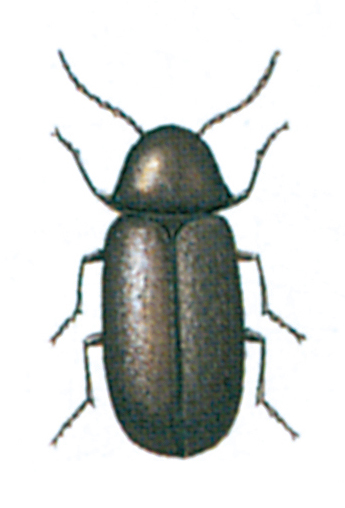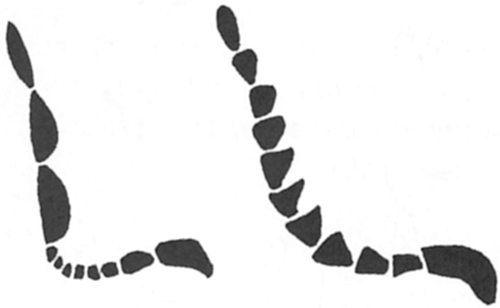
(Latin: Stegobium paniceum)
This is actually a member of the furniture beetle family which has become adapted to a diet of starch-containing foods, and the round exit-holes made by the larvae of this beetle are exactly like the holes in timber made by furniture beetles.

The species has become distributed to all parts of the world. In fact, these beetles must have been spread by ships in former times, and the old habit of banging ship’s biscuits on the table before eating them perhaps served to drive out the biscuit beetle larvae.
The female lays her eggs either in the food itself or in crevices nearby. The small larvae, only 1 mm long, hatch out in about 2 weeks and are very active.
They can live a whole week without food and they are very clever at entering packages which are not tightly closed.
When they have found a food that suits them they gnaw their way in and feed very rapidly, and become so fat and lethargic that they are quite helpless if they should accidentally fall out.

The larvae prefer hard, dried products such as crisp bread, pasta and dog biscuits. They can also live in dried vegetables, nuts and spices.
The adult beetles fly well and as they are attracted by light they are sometimes found on window frames, often far from the place where they developed.
At a temperature of 22° C, development from egg to adult takes 2-3 months.




